| Emslie Group - Techniques and Equipment |
| Home | Emslie CV | Research | Publications | Conferences | People | X-Ray Structures | Techniques | Journals | Links |
OverviewWe are a synthetic inorganic chemistry group with an interest in a broad range of research topics (rigid ligands in f-element chemistry, Lewis acid appended transition metal complexes, and ALD-focused research). Students in the group are therefore exposed (through their own research or the research of others in the group) to various aspects of ligand design/synthesis and actinide, lanthanide, transition metal and main group chemistry.The majority of this work is highly air sensitive, so the laboratory is set up to handle complexes at the extreme of air sensitivity. Complexes prepared in the group are investigated using a array of techniques. NMR spectroscopy, single crystal X-ray crystallography and elemental analysis are used in almost all cases. Powder X-ray diffraction, cyclic voltammetry (CV), NIR, IR and UV-Visible spectroscopy, and DFT calculations are also used routinely, where applicable. A more complete list of techniques (with more details) is provided below: Synthesis Crystallography Spectroscopy and Analytical Techniques Thin Film Deposition Computational Studies Other Techniques (typically not hands-on) |
Major equipment in the Emslie groupSingle-station MBraun glove box with a large -35 oC freezer (MBraun) 2 x Double-station glove boxes with -35 oC freezers Double manifold argon/vacuum lines (10 on benches, 4 in fume hoods) with Chemglass valves and associated glassware Inert atmosphere electrochemistry setup (with the capability to perform low temperature and high scan rate measurements): 283 PAR Potentiostat Galvanostat (EG&G), various electrochemistry cells, removable low temperature cold well in the glove box, Pt, GCE and Au electrodes, and Faraday cage (BASi) Photochemical Reaction Assembly (ACE Glassware) with Quartz glassware, 450 W Power supply, Medium pressure mercury vapour lamp (450 W) with water-cooled quartz immersion well, and Photochemical reaction safety cabinet 4 Point Probe for Resistivity Measurement (Jandel Engineering) |
Departmental and BIMR FacilitiesThe departmental facilities
at McMaster are essential to our research. The Brockhouse Institute for Materials Research (BIMR) is also a valuable resource which is located in the same building as the Department of Chemistry. The BIMR was one of the first materials research institutes in North America and is equiped with a range of instrumentation (e.g. TGA, DSC, SQUID magnetometer, scanning probe microscopes etc.) to which researchers in chemistry have access. For additional information, click on the links below:
|
Emslie Laboratory Pictures
Emslie Group ALD Reactor (2015)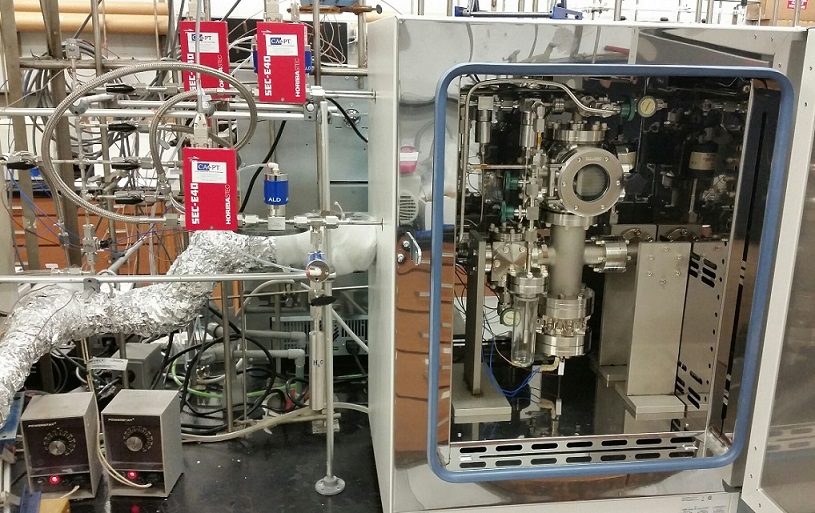 |
Brad Cowie using a swivel frit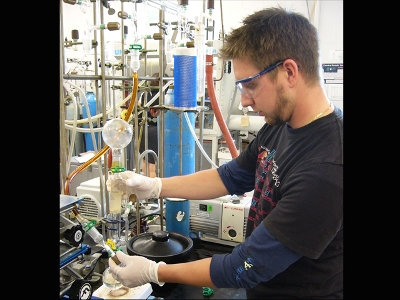 |
Metal Deposition in Solution Screening Reaction |
Kelly Motolko using the large glove box |
Synthesis of PtCl2(COD) via H2PtCl6 |
Kris Kolpin using the lab 'super computer' |
Quenching 50g Scale 9,9-Dimethylxanthene Prep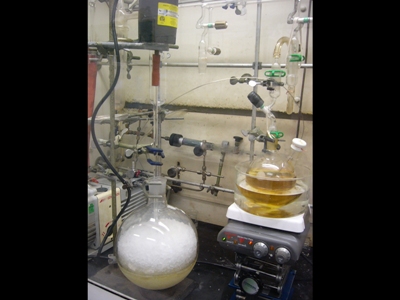 |
Carlos Cruz working at
his Vac Line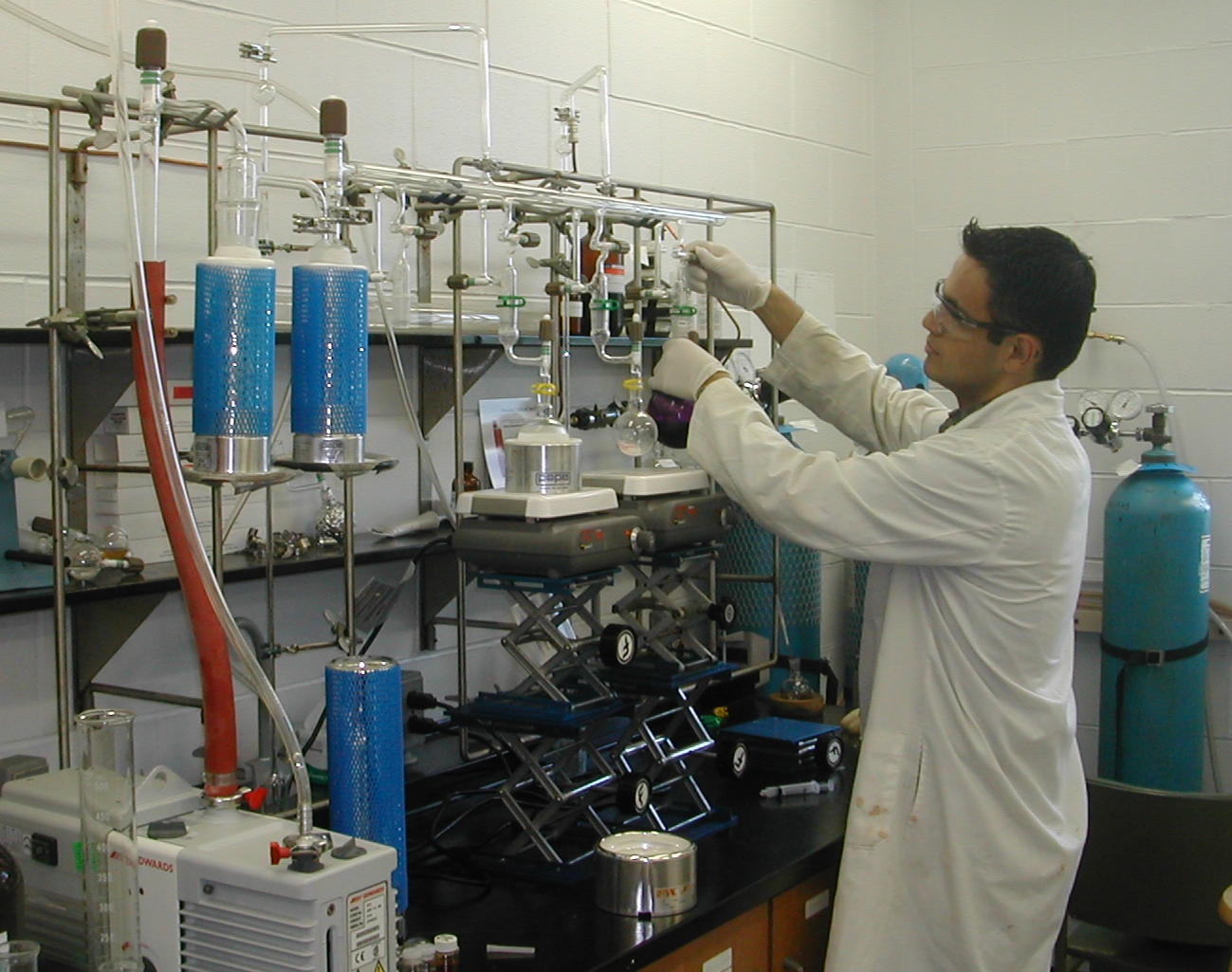 |
James Blackwell using
one of the Vac Lines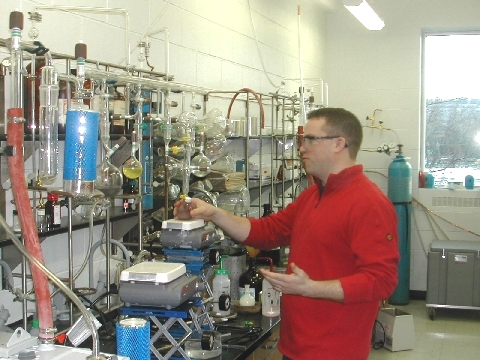 |
Emslie working in the
Electrochemistry Glove Box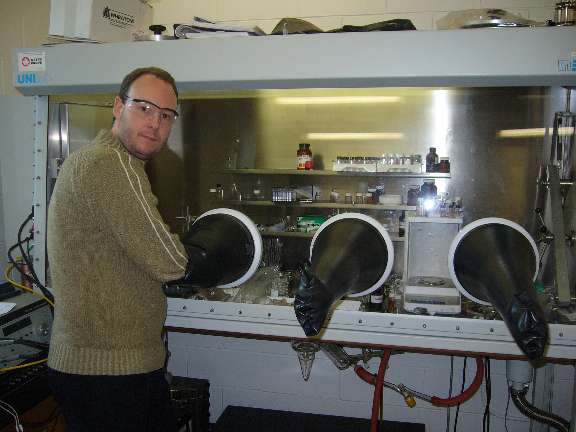 |
Carlos doing Air-Free
Electrochemistry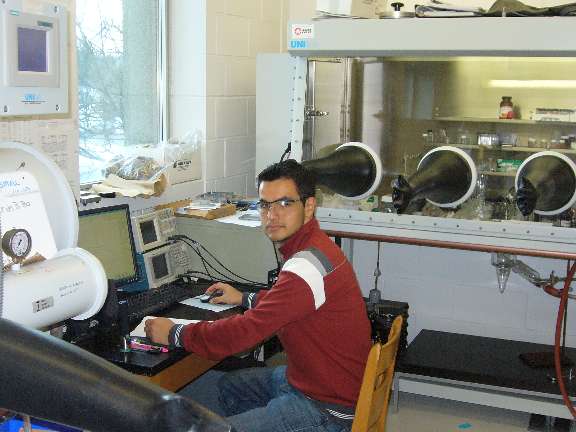 |
Carlos Cruz running our
GC-MS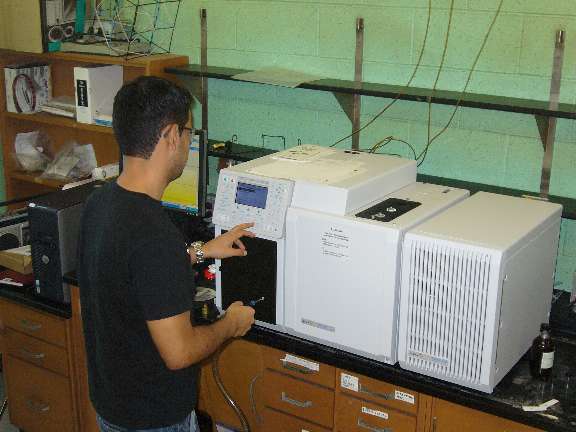 |
Synthesis Glove
Box with assorted N2(l) Dewars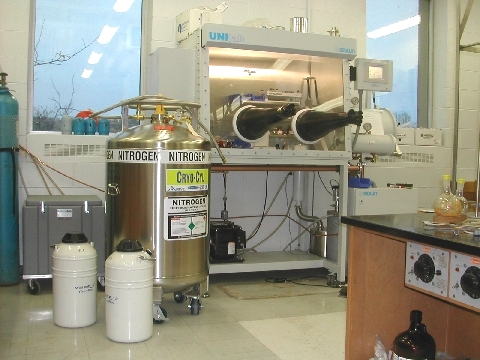 |
View down the lab towards
the 2 glove boxes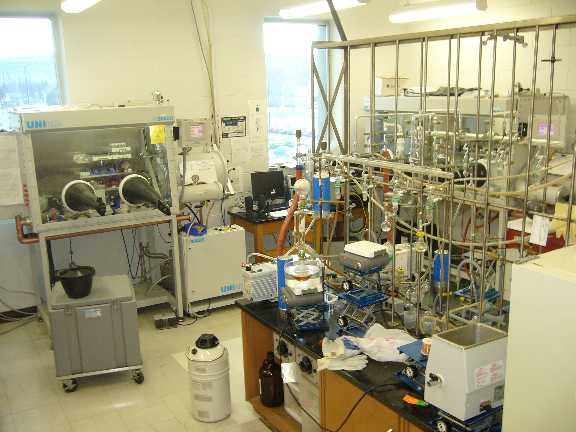 |
Carlos purifying a starting
material in a swivel frit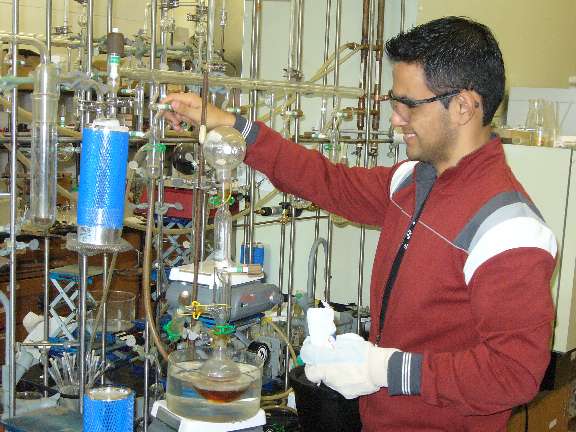 |